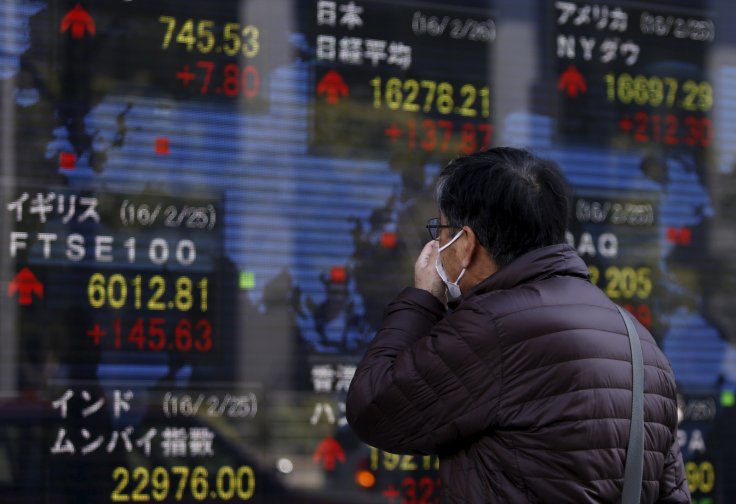
Asian shares were trying to rally on Thursday as Beijing reported better trade numbers while also limiting the fall in its yuan, offering temporary relief from fears of a global currency war.
Data showed Chinese exports rose 3.3% in July from a year earlier when analysts had looked for a fall of 2%. Imports also declined by less than expected, suggesting some resilience to the drawn-out Sino-U.S. tariff war.
Beijing helped by fixing the yuan at a firmer level than many had feared, even though it was beyond 7 per dollar level for the first time since the global financial crisis.
Markets reacted by taking back a little of their recent hefty losses. MSCI's broadest index of Asia-Pacific shares outside Japan bounced 0.6%, though it was still down more than 7% over the past two weeks.
Japan's Nikkei edged up 0.6%, and away from seven-month lows, while Chinese blue chips rose 0.9%. E-Mini futures for the S&P 500 firmed 0.2%.
Investors have increasingly come to fear the trade war will prove protracted enough to tip the world into recession and have piled into bonds and gold as a hedge.
"Financial markets are raising risks of recession," said JPMorgan economist Joseph Lupton.
"Equities continue to slide and volatility has spiked, but the alarm bell is loudest in rates markets, where the yield curve inverted the most since just before the start of the financial crisis."
Yields on U.S. 30-year bonds dived as deep as 2.123% overnight, not far from an all-time low of 2.089% set in 2016. Ten-year yields dropped further below three-month rates, an inversion that has reliably predicted recessions in the past. [US/]
The latest spasm began when central banks in New Zealand, India and Thailand surprised markets with aggressive easings, while the Philippines is expected to cut later on Thursday.
FED TO THE RESCUE?
"The decision by these APAC central banks to "go hard and early" has provided further fuel to concerns of a global recession," said Rodrigo Catril, a senior FX strategist at National Australia Bank. "This also means that the Fed will need to come to the rescue."
Chicago Fed President Charles Evans signalled on Wednesday he was open to lowering rates to bolster inflation and counter risks to economic growth from trade tensions.
Futures moved to price in a 100% probability of a Fed easing in September and a near 24% chance of a half-point cut. Some 75 basis points of easing are implied by January, with rates ultimately reaching 1%.
Dire data on German industrial output stoked concerns Europe might already be in recession and pushed bund yields deeper into negative territory.
All of which fuelled speculation that the major central banks would also have to take drastic action if only to prevent an export-crimping rise in their currencies.
The Bank of Japan would be under particular pressure as its yen has gained sharply from the flood to safe havens, leaving it at 106.20 per dollar from 109.30 just a week ago.
The euro has also bounced to $1.1210, from a two-year trough of $1.1025, while the U.S. dollar index has backtracked to 97.523, from a recent peak of 98.932.
New Zealand's dollar was still picking up the pieces after sliding as much as 2.6% on Wednesday when the country's central bank slashed rates by a steep 50 basis points and flagged the risk of negative rates.
The kiwi was huddled at $0.6456 having shed 1.1% for the week so far.
The rapid decline in yields helped lift gold above $1,500 for the first time since 2013. Spot gold was last at $1,500.23 per ounce, having been as far as $1,510 on Wednesday. The precious metal is up 16% since May.
Oil prices regained some ground as talk that Saudi Arabia was mulling options to halt crude's descent helped offset a build in stockpiles and fears of slowing demand.
Brent crude futures climbed $1.53 to $57.76, though that followed steep losses on Wednesday, while U.S. crude rose $1.50 to $52.59 a barrel.








